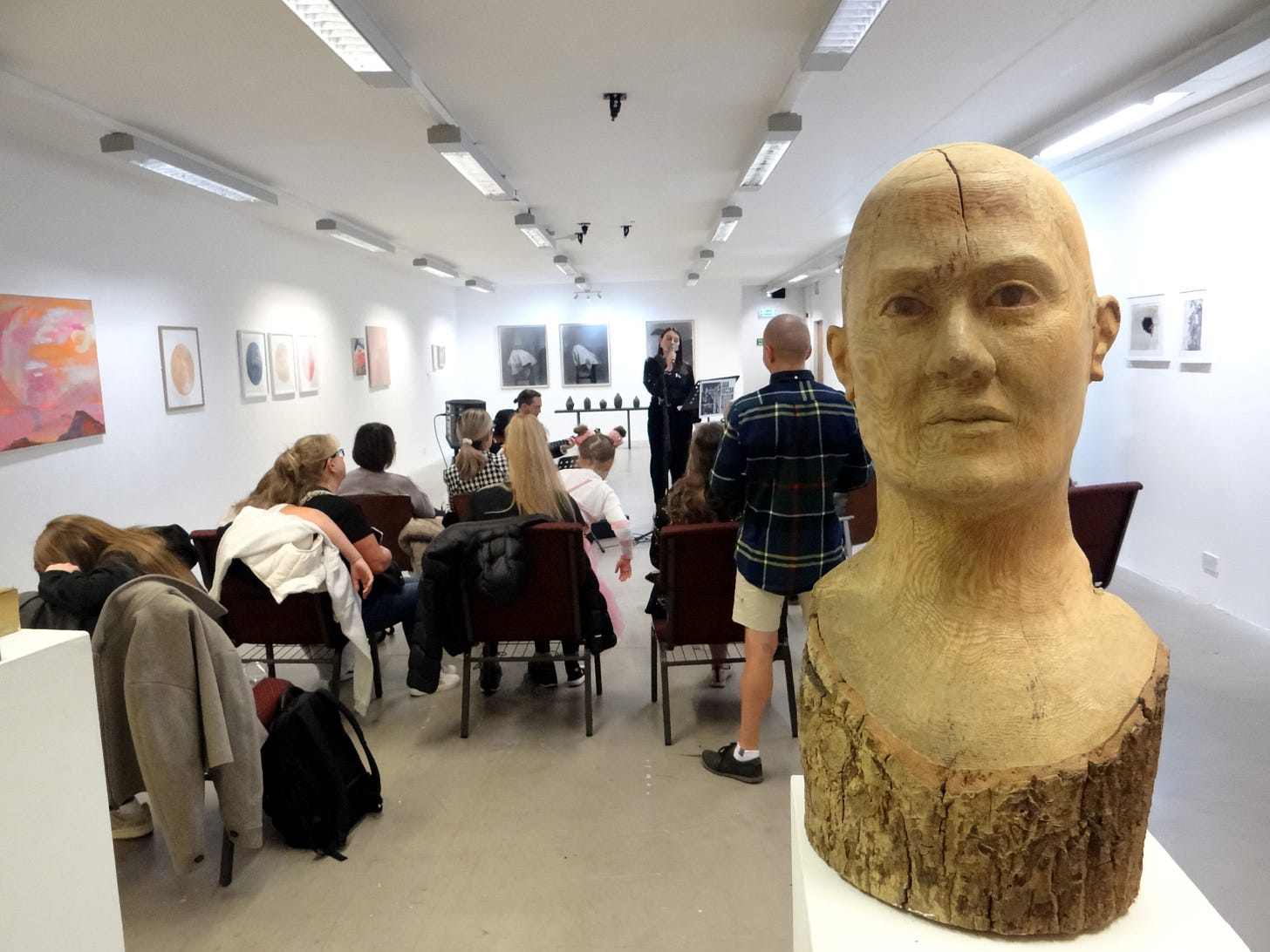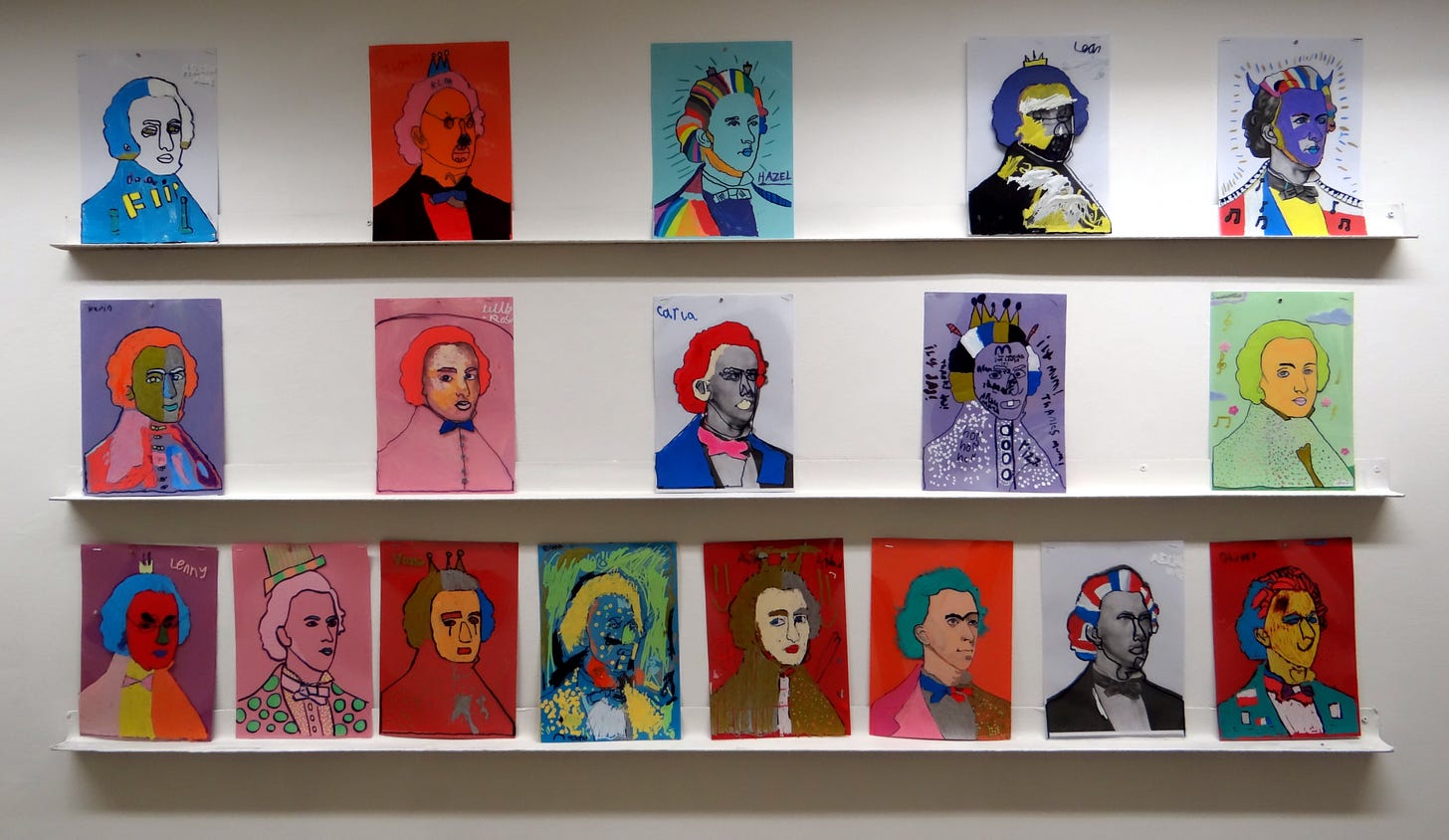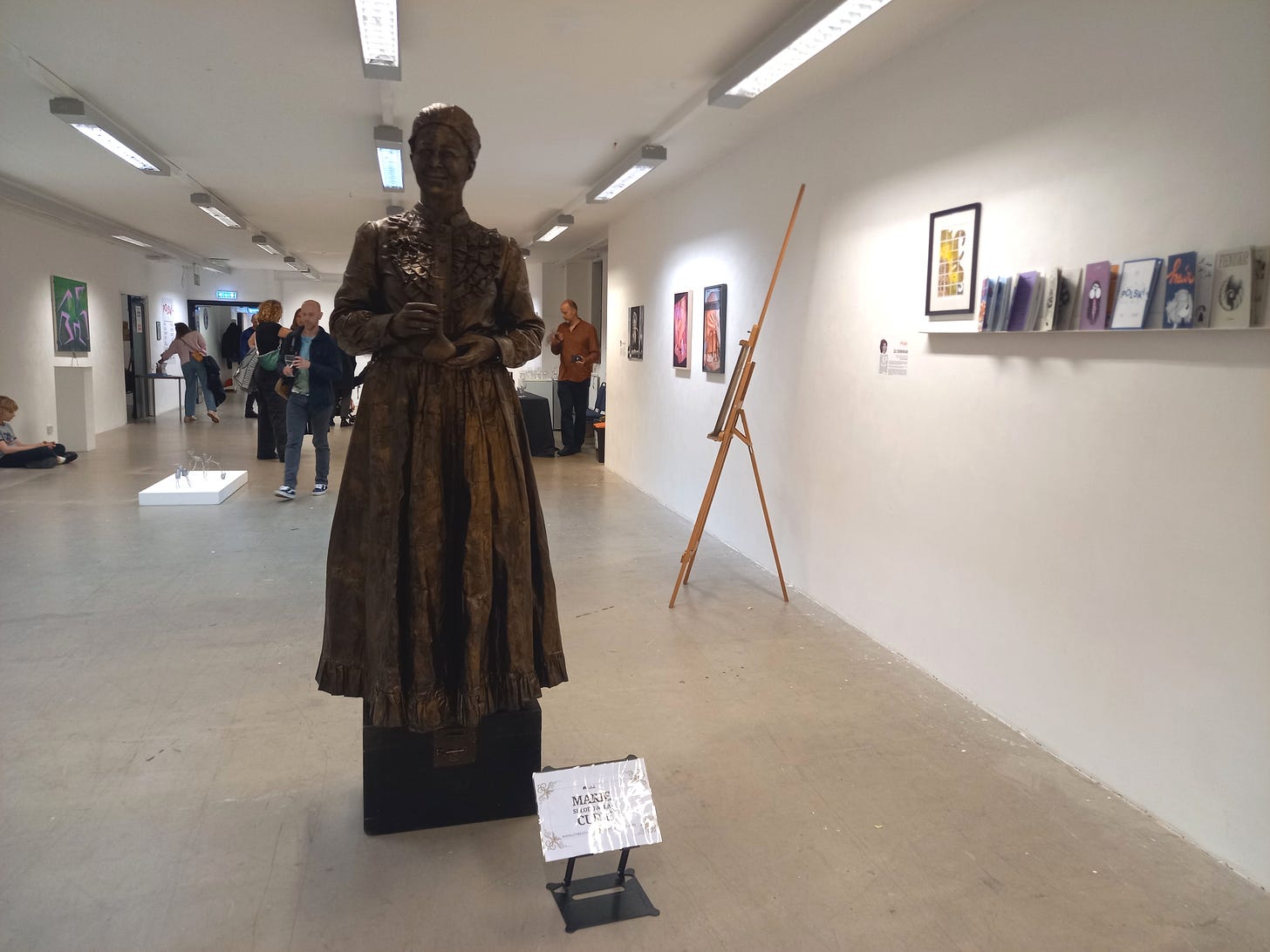How Polish artists are shaping the Capital's next generation
Unique cross-cultural collaboration taking new art into city classrooms
In the grounds of Barony Castle, just outside Peebles, lies a topographical map of Scotland, 40 metres wide and 50 long. The Great Polish Map of Scotland was created by a former Polish soldier Jan Tomasik who had been evacuated to Scotland during WWII, and spent the rest of his life in the country.
He was just one of the 170,000 Polish soldiers housed in Scotland to assist the allies in the war, and one of dozens of Polish artists who have worked from Britain and shaped British art.
This week, in St Margaret’s House, at Meadowbank, within the walls that proudly shout “ART” onto the street below, is a collection celebrating a later wave of Polish arrivals into Scotland. The sculptures, photographs and paintings also mark ten years of an innovative school arts programme.
Polish-born Iga Bozyk, who has jointly curated the exhibition, arrived in Scotland during this second wave of Polish migration to Scotland, when Poland joined the EU. She has curated numerous exhibitions of Polish art in Scotland, but is keen to remember that her work is just a continuation of a long relationship between Poland and Scotland. “It gives me goosebumps talking about [the history],” she says.
A unique artist in residence
The second room of the POLSKI exhibition is more colourful than the first. Filled with child-like joy, enormous music-themed murals, a wall of animal drawings, and colourful hanging sculptures. These have been made by pupils at Abbeyhill Primary, with the guidance of the school’s very own artist in residence. With yearly funding from the Polish consulate, two artists per year are invited to work in the school, creating some kind of expressive art with the children: dance, painting, sculpture, you name it. The art sessions are part of the school’s curriculum, and fully funded by the Polish consulate and other small grants. Neither the parents nor the school pay extra for the programme, while the artists receive a fair payment for their work.
“As far as we know, this is the only one of Edinburgh’s 86 primary schools to run this kind of programme,” says Iliyana Nedkova, co-curator alongside Bozyk. Nedkova and Bozyk had various reasons for starting the artist residency programme at Abbeyhill. Nedkova’s children were going to the school, and she could see that their teachers simply didn’t have the time to provide in-depth art lessons. Bozyk was in the area, seeing tensions arising during the arrival of more Polish families after 2004. The school had already been involved in the Colony of Artists festival in September, so Nedkova went to the head teacher with that hook - let’s get an artist in, and help our kids make an exhibition for the Colony of Artists every year.
The school were understandably thrilled. Overworked primary teachers scarcely have the time to teach core subjects these days, let alone put together an art class that goes beyond copying Vincent Van Gogh’s sunflowers. Not that there’s anything wrong with Van Gogh, or sunflowers, but there are so many more artists and art forms to inspire our children to be creative than just the classic well-known canon.
“We believe that Abbeyhill Primary School is the only state-funded primary school in Scotland to champion, facilitate and benefit from an artists-in-residence programme such as POLSKI,” says Abbeyhill head teacher Moira Robertson. “Previously the art pedagogy at our primary school was delivered by non-arts-trained class teachers but the innovative artists-in-residence programme… provides creative industries skills, pathways and role models to our young learners, to the new generations of Poles and Scots in Edinburgh. Long may it continue.”
Indeed, Nedkova emphasises the primary reason these Polish artists, or artists of Polish descent, are recruited to work with Abbeyhill pupils is that they are talented artists, who have a wealth of skills and creativity to pass on to the children. The main goal, she says, is providing high quality art education that is accessible to all children, regardless of income. However, in Leith, where (according to EU Settlement Scheme statistics) much of Edinburgh’s Polish community is concentrated, there is an added value for Polish and non-Polish pupils.
“The great thing about kids is that when you give them something practical to do, they just get into it, and they forget all their differences,” says Bozyk. All pupils at Abbeyhill participate in art classes. Sometimes they are specifically learning about Polish culture or famous Polish people. One recent residency, for example, led by musician Aga Idczak and artist Aga Mietkiewicz focussed on Polish composer Frédéric Chopin. Other classes are simply art courses by people who happen to be Polish. Sylwia Kolasińska, who worked in the school in 2017/18 and now runs Mud Station Pottery, simply turned the P4 classroom into a pottery: we can all imagine the joy and chaos that caused!
Bozyk says that she has always felt welcome in Scotland, particularly in the multicultural hub of Leith. But she still believes it is important to be providing children with a positive image of a Polish immigrant. During the first few years of the POLSKI artist residency programme, the UK was awash with anti-EU, anti-immigrant rhetoric, leading to the Brexit vote. Rather than healthy debate around the right balance of migration policy, the outright vilification of immigrants in the UK appears to only be getting harsher as time goes on. For children to see an example of how immigrants add value to the culture and economy of the place they live in is a small part of helping them to have a full understanding of what immigration actually means.

Art in Exile
Bozyk is inspired by a book, Art in Exile: Polish Painters in Post-War Britain, which compiles the contributions of Polish artists to Britain since the first wave of Polish immigrants in the second World War. Art in Exile is a fitting title; while Bozyk is sure that other Polish people would have other perspectives, she feels that the communist era in Poland still influences Polish artists hugely. “You will see very expressive, very colourful art, lots of expressions of LGBT identity… all the things that were repressed during the communist era,” she says. She also mentions the influence of Catholicism, whether loyalty to or rebellion against it, is very strong in Polish culture and art. Finally, she says that a theme for her generation of the Polish community, who arrived as adults around 2004, is the sadness of their parents who stayed behind, who are growing old far away.
Following this conversation with Bozyk, I can see the colourful rebellion and the nostalgia for faraway elders in the POLSKI exhibition. Had I not been primed, would this exhibition look any different to any other Scottish one to me? Probably not. The art on display here is both fundamentally the same as other Scottish art, but also contains a unique historic and cultural perspective, from a unique place in Scottish society.





